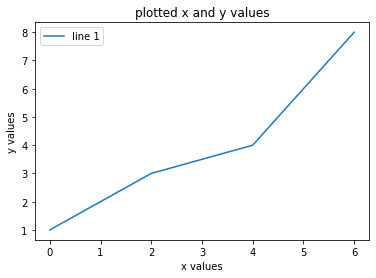7.4. Saving plots¶
Matplotlib plots can be saved as image files using the plt.savefig() function.
The plt.savefig() function needs to be called right above the plt.show() line. All the features of the plot must be specified before the plot is saved as an image file. If the figure is saved after the plt.show() command; the figure will not be saved until the plot window is closed. Calling plt.savefig() after calling plt.show() can be problematic when building plots in a Jupyter notebook with %matplotlib inline enabled.
A standard savefig() command is:
plt.savefig('plot.png', dpi=300, bbox_inches='tight')
Where 'plot.png' is the name of the saved image file. Matplotlib infers the image file format (.png, .jpg, etc) based on the extension specified in the filename.
The keyword argument dpi= specifies how many dots per inch (image resolution) are in the saved image. dpi=72 is fine for web images. dpi=300 is better for an image designed to go in a written report or .pdf document.
The keyword argument bbox_inches='tight' is optional. If the axis labels in the plot are cut off in the saved image, set bbox_inches='tight'.
The following code section constructs a line plot and saves the plot to the image file plot.png.
import matplotlib.pyplot as plt
# if using a Jupyter notebook, include:
%matplotlib inline
x = [0, 2, 4, 6]
y = [1, 3, 4, 8]
plt.plot(x,y)
plt.xlabel('x values')
plt.ylabel('y values')
plt.title('plotted x and y values')
plt.legend(['line 1'])
# save the figure
plt.savefig('plot.png', dpi=300, bbox_inches='tight')
plt.show()
